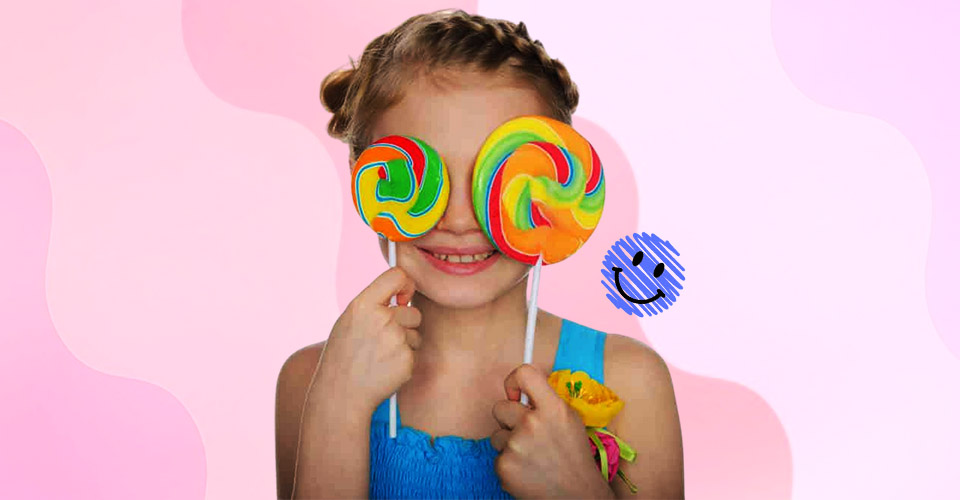1 はじめに:「がんばったらお菓子」でいいの?
宿題を終えたらシール、片づけができたらゲーム時間10分など、多くの家庭で自然に行われている“ごほうび作戦”。短期的には効果抜群ですが、「シールがないと動かない子にならないか」「内発的なやる気を奪っていないか」という不安もつきまといます。行動心理学と脳科学の両面からは、外発的動機(Extrinsic Motivation)と内発的動機(Intrinsic Motivation)をどのように組み合わせるかが子どもの長期的成長を左右すると示されています。今回は下記の5つの視点からごほうびをやる気のブースターとして上手に機能させる方法を提案していきたいと思います。
- 外発・内発動機の定義と脳内報酬系のしくみ
- ごほうびの短期メリットと長期リスク
- 年齢別・課題別に推奨される「ごほうび設計」
- 内発的動機を高める家庭環境づくり
- 実践例・失敗例とQ&A
2 外発的動機と内発的動機:脳はどう反応するのか
心理学者デシとライアンは自己決定理論(SDT)で、動機づけを「外部からの報酬・圧力」によるものと「活動そのものの楽しさ・価値」によるものに分けました。
- 外発的動機:報酬(お菓子、シール、賞賛)、罰(叱責、減点)に反応して行動が起こる。
- 内発的動機:好奇心、達成感、探求欲など、自分の内部から湧くエネルギーで行動が続く。
脳内では両者ともドーパミン報酬系が関与しますが、スイッチの入り方が異なります。外発的ごほうびは腹側線条体が急激に活動し、即席の“やる気スパイク”を生みます。一方、内発的動機の場合、前帯状皮質と海馬がゆるやかに同期し「学習内容そのものが快」として記憶にタグ付けされます。この違いを理解することが、ごほうび設計の第一歩です。
3 ごほうびの“光と影”──短期メリットと長期リスク
メリット
- 行動の起動キー:難しい・退屈な課題に着手させる初動を強く後押し。
- 具体的目標の可視化:何を達成すれば報酬が得られるかが明確で、行動が具体化。
- 自己効力感の種まき:成功体験が得られると「できた」記憶が自信の源泉に。
リスク
- 報酬依存症:ごほうびがないと動かない“アメ待ち脳”に陥る。
- 過程より結果重視:点数や順位ばかり追い、学習内容の面白さが感じられなくなる。
- 報酬インフレーション:同じ報酬では刺激が足りず、エスカレートが必要。
- 創造性の低下:自由探索型課題では、報酬が思考範囲を狭める(“キャンディー実験”, 1983)。
要するに、ごほうびは「エンジンをかけるスターター」には最適ですが、「永続運転の燃料」にするには工夫が必要なのです。
4 年齢別・課題別 ごほうび設計6原則
- 未就学(3~6歳):即時・具体・小さめ
時間概念が未成熟なため、行動直後にシールやハイタッチでフィードバック。報酬は“次の行動”を阻害しない小ささがポイント。 - 小学校低学年:見える化+徐々に遅延
シールを10枚ためると図書カード、といった“累積型”で待つ力を養う。課題を自分で確認できるチェックリストを用意。 - 小学校高学年:経験型報酬シフト
物より体験(親子料理、科学館ツアー)を報酬に。「やってみる→達成→さらなる挑戦」という内発連鎖を意識。 - 学習課題 vs. 生活習慣
学習は“理解度”が内発化を助けるため、ごほうびは導入期のみ。生活習慣(歯みがき、整理整頓)は習慣形成まで“固定報酬”を継続し、その後フェードアウト。 - 難易度による報酬比率
成功確率70%未満の難課題には大きめ報酬でリスクテイクを促進。70%以上なら報酬控えめで内発化を促す。 - フェードアウトと置き換え
報酬を段階的に小さく、回数を減らし、最終的に社会的報酬(称賛、共有)に置き換えると依存を防げる。
5 “内発エンジン”を強くする家庭環境のつくり方
- 好奇心の余白:予定を詰め込みすぎず、自由に探究できる“ヒマ時間”を設定。
- 選択肢の提示:親が何をやらせるか決めるより、「AとBどちらやる?」と自己選択を尊重。
- プロセスに光を当てる会話:結果でなく試行錯誤を褒め、「どこが楽しかった?」と掘り下げる。
- 失敗の物語化:親自身の失敗談を語り、再挑戦のプロセスを共有。
- ピアラーニング:きょうだいや友人と学び合う場を用意すると、外発→内発移行が早まる。
6 ケーススタディ──成功例とつまずき例
成功例:シール→経験型報酬に移行
A君(7歳)は宿題1ページごとにシールを獲得。10枚で“実験キット作りデー”という体験型報酬に変更したところ、半年後には「今日の実験のために算数を終わらせる」と自発的に計画を立てるようになった。
失敗例:報酬インフレーション
Bちゃん(9歳)はテスト90点で500円、95点で1,000円。点数が下がると学習意欲が急落し、さらに高額報酬を要求。金銭報酬を止めた途端、家庭学習がゼロに。→原因:報酬が外発動機に固定化、自己評価が点数=価値になった。
7 よくあるQ&A
Q:報酬なしで動かないときは?
A:興味スイッチが入る切り口を探す。“虫好き”なら算数を昆虫カードで計算するなど、課題自体を再設計。
Q:きょうだいで能力差がある場合、報酬は同じ?
A:基準を「努力量」に置き換える。同じ時間集中したら同じポイント、結果は不問。
Q:ゲームや動画視聴を報酬にしても大丈夫?
A:時間と質を管理できれば可。ただし高刺激メディアは依存性が高いので、経験型報酬への段階移行を早めに計画。
8 まとめ:ごほうびは“点火プラグ”、内発は“エンジン”
外発的ごほうびは、子どもを瞬時に動かす強力な点火プラグですが、走り続けるには内発的エンジンが不可欠です。親は「ごほうび→体験報酬→社会的報酬→内発化」という階段設計を意識し、試行錯誤を称賛する対話でエンジンを鍛えましょう。今日のシールが、将来の「自分で学び続ける力」へと転換するよう、バランスの舵を取り続けてください。
Are Rewards Really Necessary? Re-examining the Balance Between “Extrinsic” and “Intrinsic” Motivation
1. Introduction — Is “Do it and you’ll get candy” really okay?
When a child finishes homework they get a sticker; when they tidy up, they earn ten extra minutes of game time—reward strategies that many families use almost unconsciously. They work brilliantly in the short term, yet an uneasiness lingers: “Will my child become someone who moves only for stickers?” “Am I sapping the child’s inner drive?” From the perspectives of behavioral psychology and neuroscience, research shows that how we combine extrinsic motivation and intrinsic motivation critically affects a child’s long-term development.
In this article we will propose practical ways to make rewards function as an effective “motivation booster,” viewed from five angles:
- The definitions of extrinsic / intrinsic motivation and the brain’s reward system
- Short-term benefits and long-term risks of rewards
- Recommended “reward designs” according to age and type of task
- Creating a home environment that raises intrinsic motivation
- Concrete case studies, missteps, and a Q&A section
2. Extrinsic and Intrinsic Motivation—how does the brain react?
Psychologists Edward Deci and Richard Ryan, in Self-Determination Theory (SDT), divided motivation into “that which comes from external rewards or pressure” and “that which comes from the fun or value of the activity itself.”
- Extrinsic motivation: behavior that appears in response to rewards (sweets, stickers, praise) or punishments (scolding, deductions).
- Intrinsic motivation: behavior that continues powered by energy arising inside oneself—curiosity, sense of achievement, desire to explore.
Both involve the dopamine reward system in the brain, but the switch turns on differently. Extrinsic rewards make the ventral striatum fire sharply, producing an instant “motivation spike.” With intrinsic motivation, the anterior cingulate cortex and hippocampus synchronize more gently, tagging the learning content itself as “pleasant.” Understanding this difference is the first step in designing effective rewards.
3. The “light and shadow” of rewards—short-term merits and long-term risks
Merits
- Behavior ignition key: strongly pushes a child to start difficult or boring tasks.
- Visualization of concrete goals: clarifies what must be achieved to obtain the reward, making behavior concrete.
- Seed-planting of self-efficacy: when a child succeeds, the memory “I did it” becomes a source of confidence.
Risks
- Reward dependency: the child’s “reward-waiting brain” does not move without an incentive.
- Process ignored, result overvalued: the child chases only scores or ranks and ceases to feel the fun of learning itself.
- Reward inflation: the same reward no longer stimulates; ever-greater rewards become necessary.
- Creativity decline: with open-ended tasks, rewards narrow the range of thinking (the famous “candy experiment,” 1983).
In short, rewards are perfect as “starter motors to fire up the engine,” but need ingenuity to serve as “fuel for continuous running.”
4. Six principles for age- and task-based reward design
- Preschool (ages 3–6): immediate, specific, small
Because the sense of time is immature, give feedback right after the action—a sticker or high-five. Keep the reward small so it doesn’t disturb the next action. - Lower elementary grades: make it visible + introduce slight delay
Use a cumulative system such as “collect ten stickers to get a bookstore gift card,” cultivating the ability to wait. Prepare a checklist the child can check by themselves. - Upper elementary grades: shift to experience-type rewards
Replace goods with experiences—cooking together, a trip to a science museum. Keep in mind the intrinsic chain of “try → achieve → aim for a new challenge.” - Academic tasks vs. daily habits
For academics, rewards are limited to the introductory phase because “understanding” itself helps internalize motivation. For habits (tooth brushing, tidying), continue a fixed reward until the habit forms, then fade it out. - Reward size by difficulty
For tasks with less than 70 % success probability, offer a larger reward to promote risk-taking. For easier tasks, give a smaller reward to encourage internalization. - Fade-out and substitution
Gradually shrink the reward and lengthen the interval, and in the end replace it with social rewards (praise, sharing) to prevent dependence.
5. Building a home environment that strengthens the “intrinsic engine”
- Leave room for curiosity: avoid overscheduling; set aside “free time” for independent exploration.
- Offer choices: rather than deciding what the child must do, respect self-selection by asking, “Would you like to do A or B?”
- Highlight the process in conversation: praise trial-and-error instead of results, and probe with “Which part was fun?”
- Narrate failures: parents share their own flop stories and describe the process of retrying.
- Peer learning: preparing places where siblings or friends learn together speeds the shift from extrinsic to intrinsic motivation.
6. Case studies—examples of success and stumbling
Success story: from stickers to experience rewards
Seven-year-old A earned a sticker for every page of homework. After collecting ten, the reward changed to a “DIY science-kit day.” Six months later he started planning on his own: “I’ll finish math so we can do today’s experiment.”
Failure story: reward inflation
Nine-year-old B received 500 yen for a 90-point test, 1,000 yen for 95. When scores dropped, learning desire plunged, and she demanded still higher cash. The moment money rewards stopped, home study fell to zero. Cause: the reward fixed motivation as extrinsic, and self-worth became equal to test scores.
7. Frequently asked questions
Q: What if my child won’t move without a reward?
A: Find an interest-switching angle. If the child loves insects, recast math problems with insect cards; redesign the task itself.
Q: If siblings differ in ability, should they receive the same reward?
A: Shift the standard to “amount of effort.” Give the same points for the same duration of concentration, regardless of outcome.
Q: Is it okay to use games or videos as rewards?
A: Yes—if time and content are managed. Because high-stimulation media are strongly habit-forming, plan an early shift to experience rewards.
8. Conclusion—Rewards are the “spark plug,” intrinsic motivation the “engine”
Extrinsic rewards are powerful spark plugs that instantly start a child’s action, but a robust intrinsic engine is indispensable for sustained driving. Parents should design the staircase “reward → experience reward → social reward → internalization,” and strengthen the engine through dialogue that praises trial-and-error. Keep steering the balance so that today’s sticker transforms into tomorrow’s ability to learn of one’s own accord.




コメント